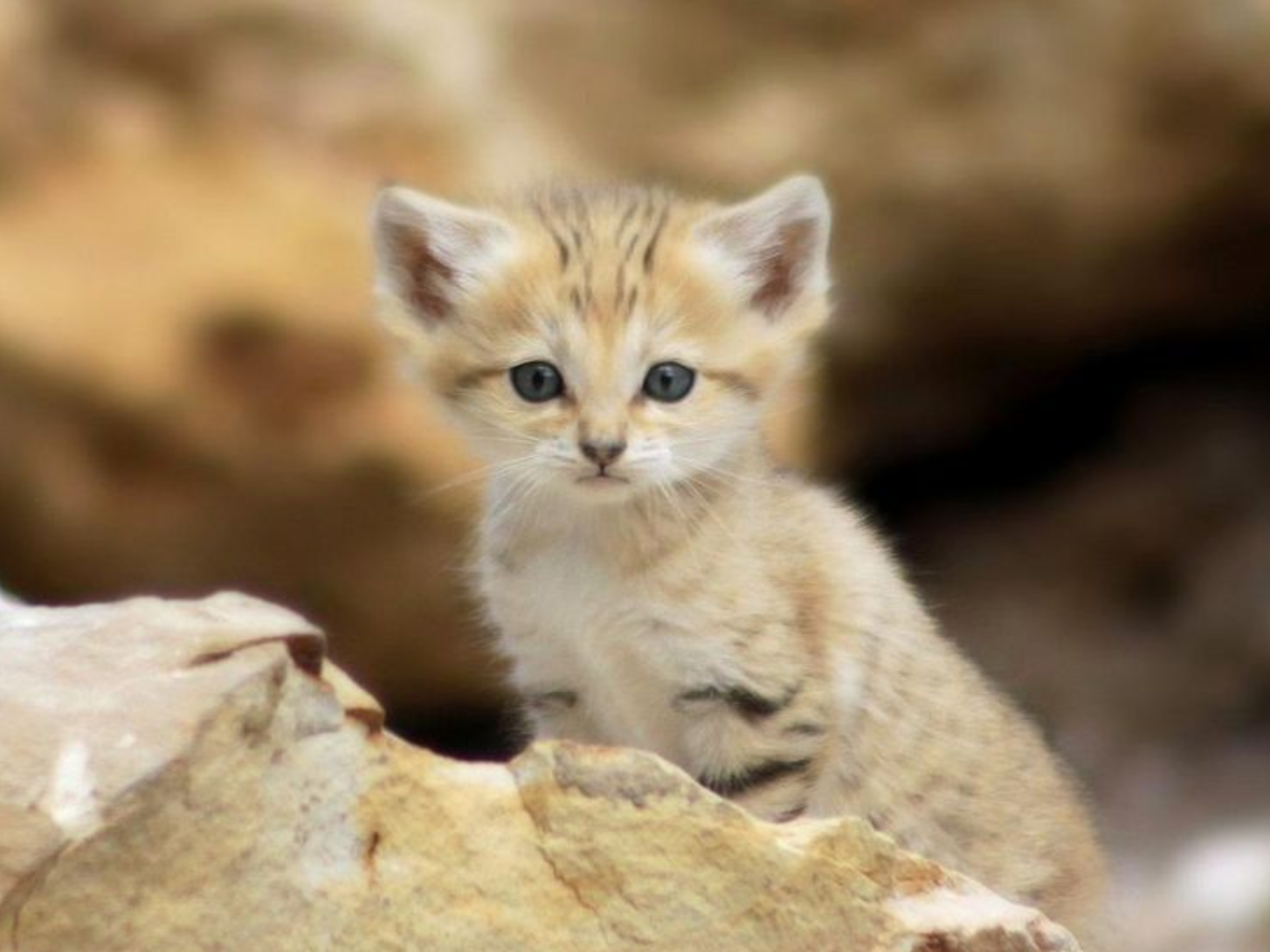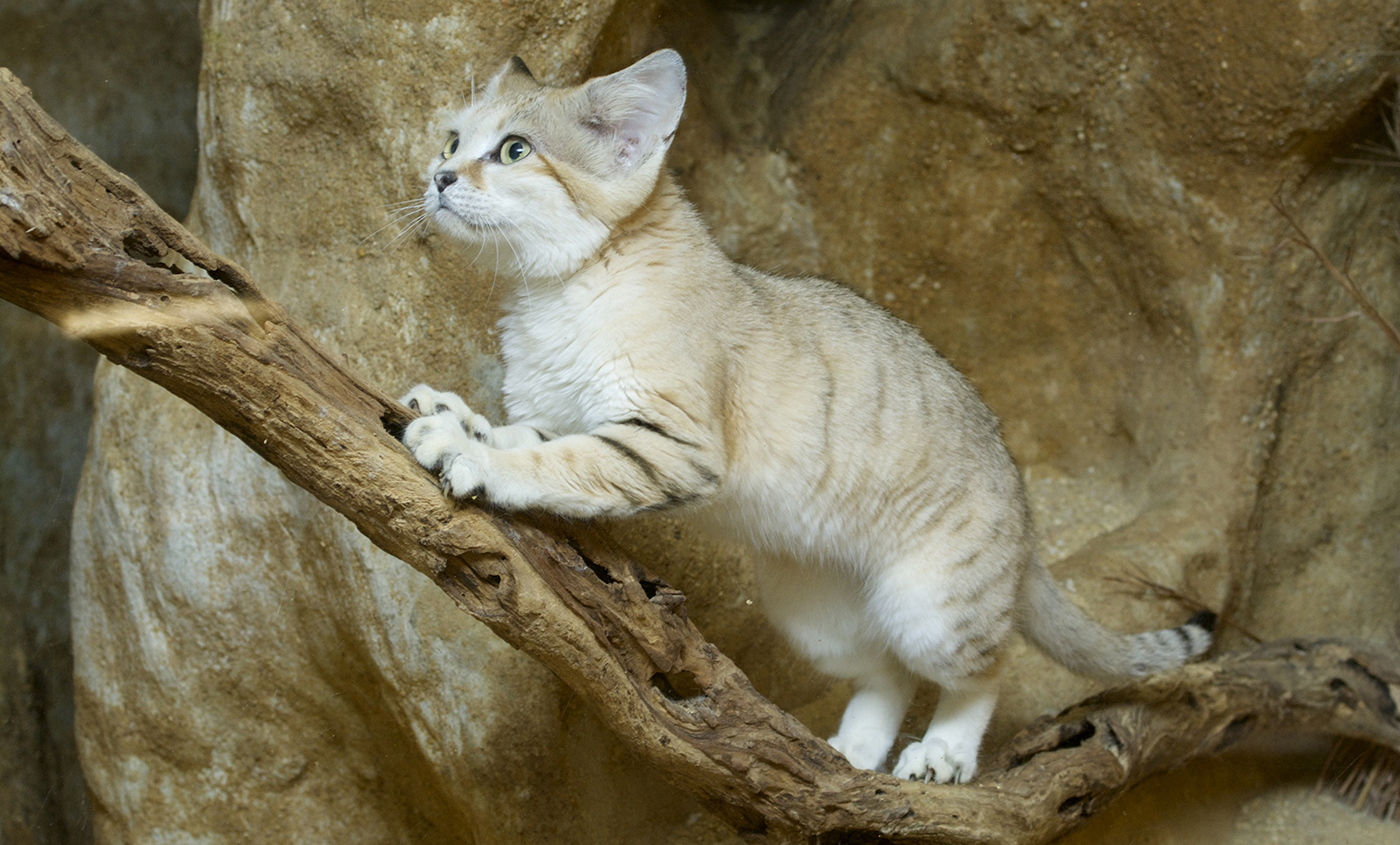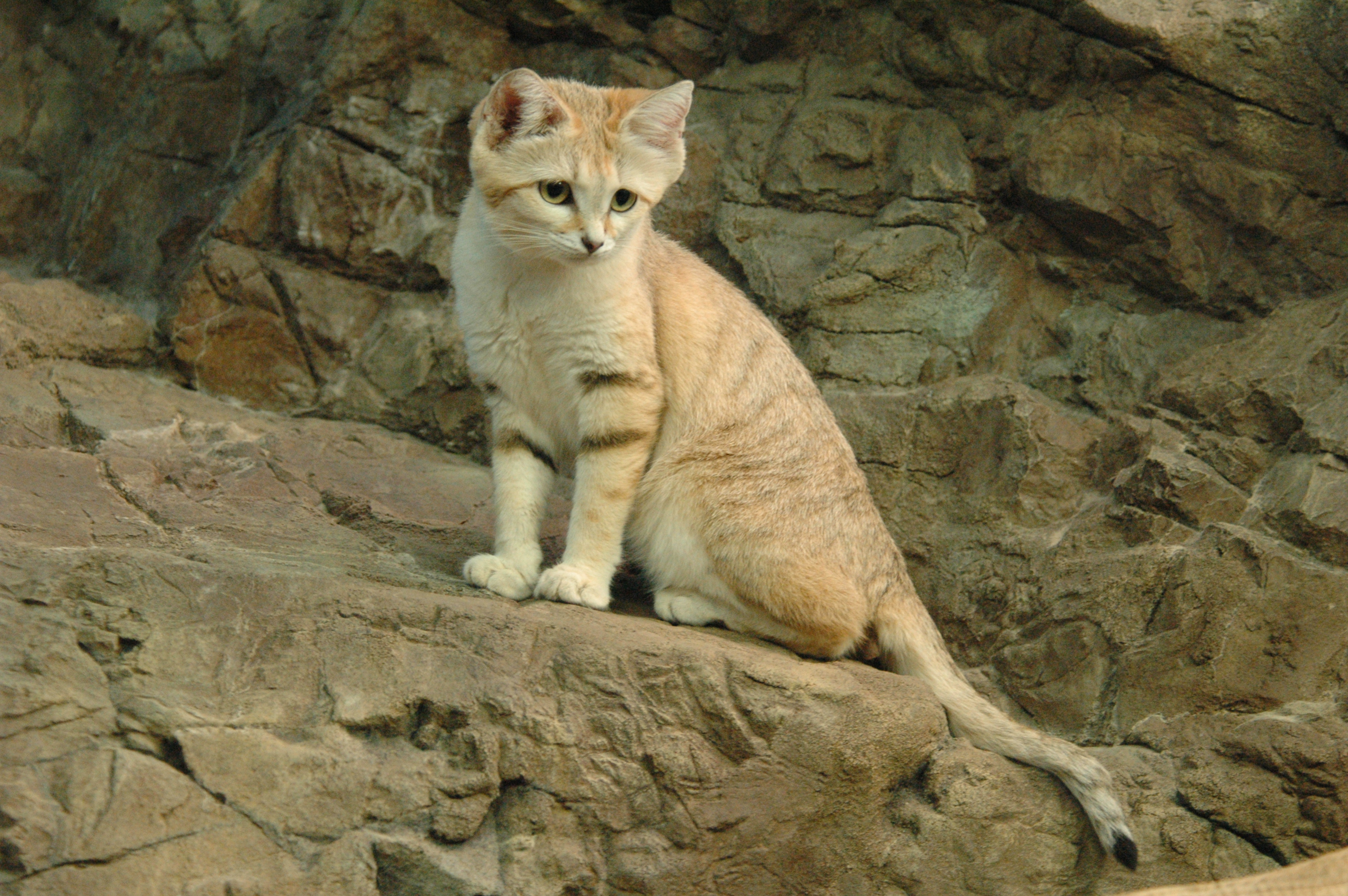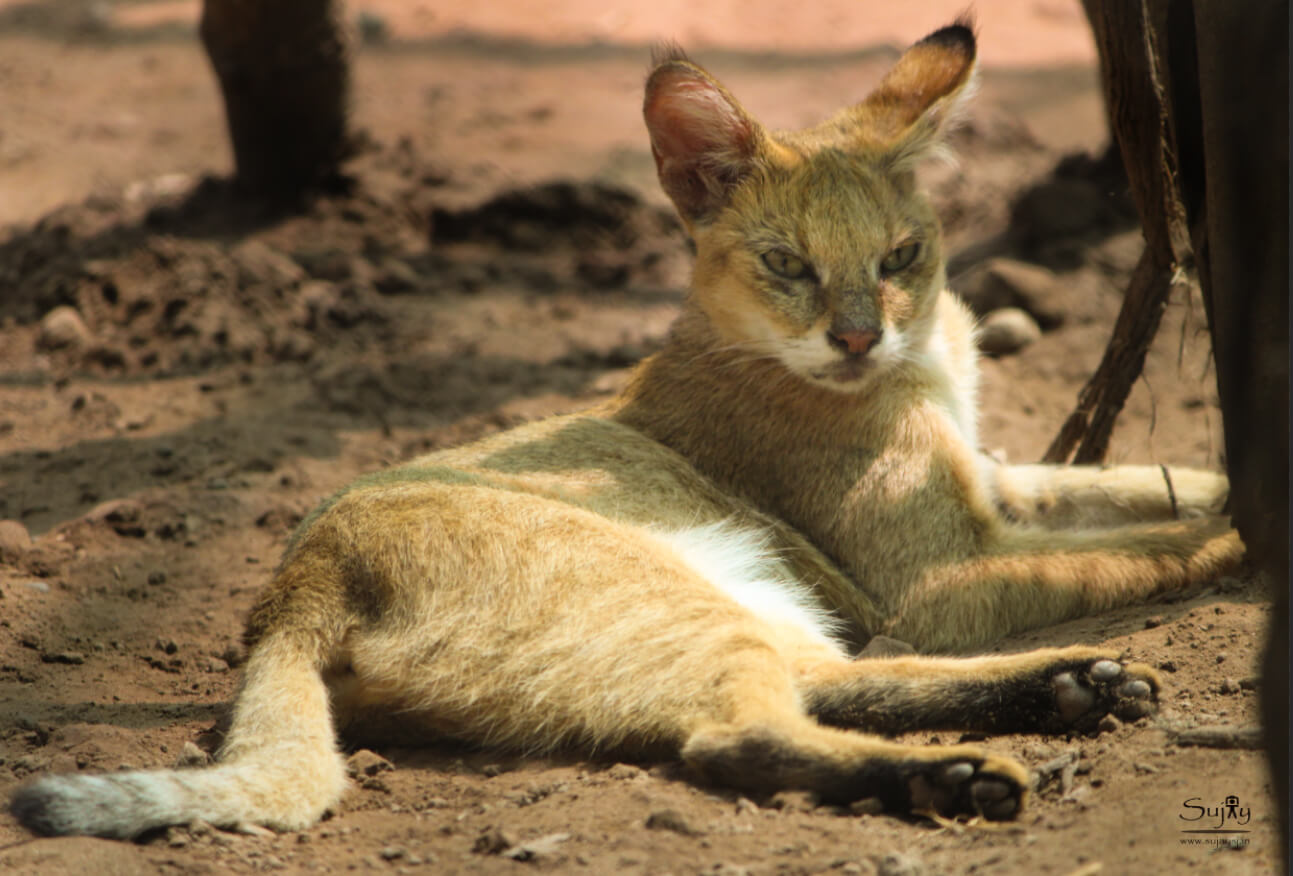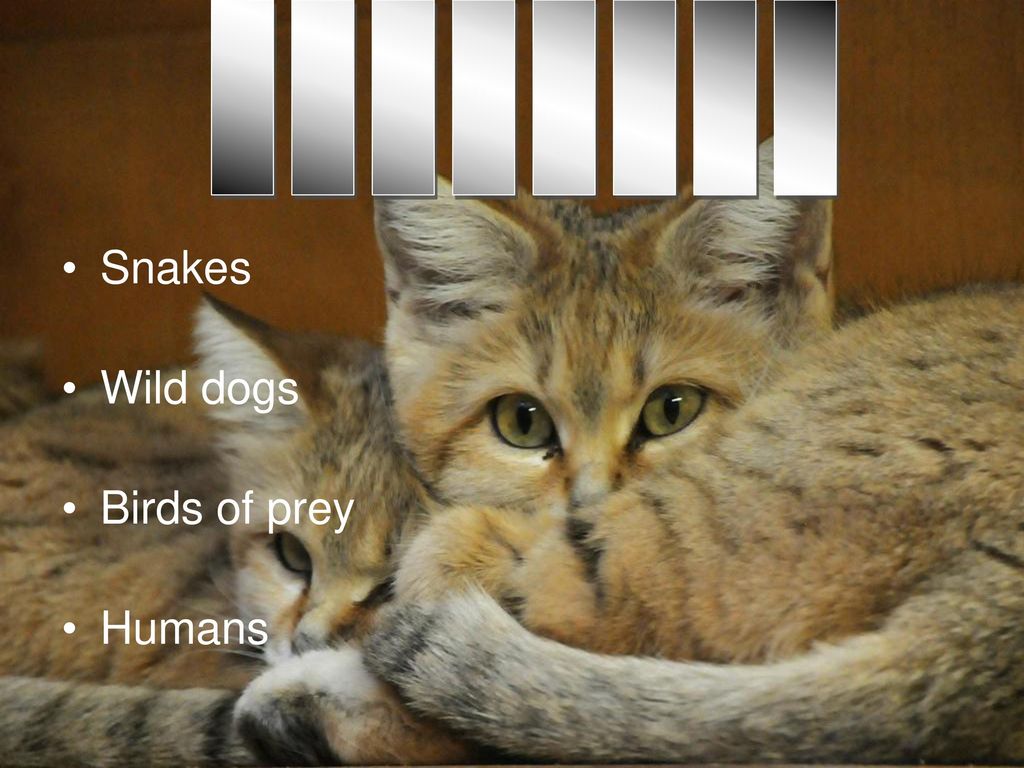Sand Cats Habitat Description
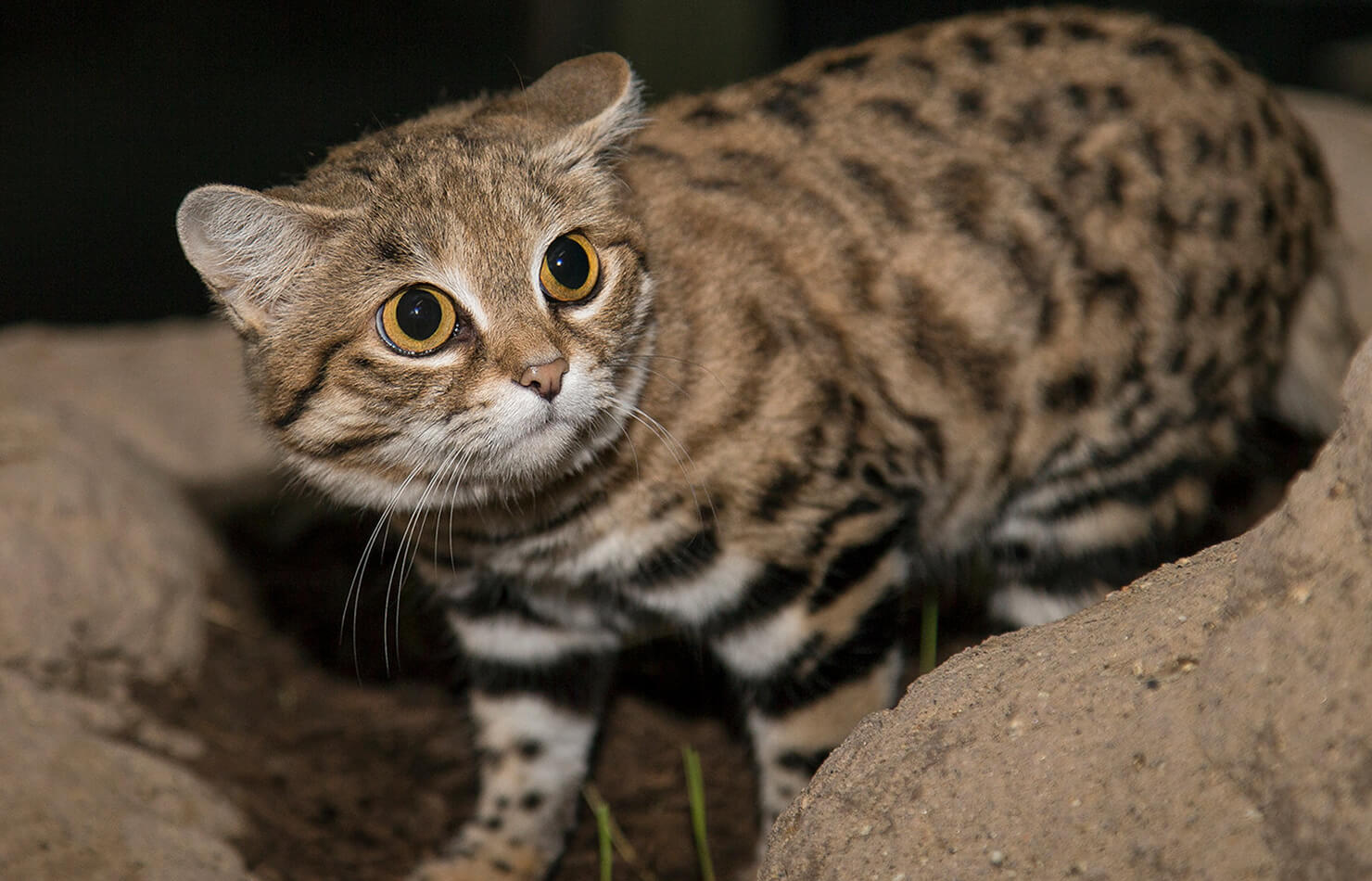
Members of this species are psammophillic sand dwelling occurring in very arid dry habitats such as deserts.
Sand cats habitat description. Instead they live in dry sandy plains and rocky valleys. Residential and commercial development biological resource use human pressures habitat loss and cross breeding with domestic cats. Its 57 cm short ears are set low on the sides of the head aiding detection of prey moving.
Sand Cats Scientific Name. Sand cats footprints dont remain in the sand due to their furry paws. They prefer flat or undulating terrain with sparse vegetation retreating into burrows during extreme conditions to.
From the Sahara through the Middle East to Turkestan. They played an essential part in their local areas as they kept the population of rodents and vermin under control. Number of sand cats decreased drastically in the past couple of decades due to habitat loss poaching recreational hunt and introduction of new species which compete for the prey and spread diseases.
In the northern areas between the Aral and Caspian seas the sand cat occurs only sparsely in the more claylike desert soils of the Ustyurt and Mangyshlak regions. The Sand cat hides leftover food in the sand. The sand cat lives in areas far from water sources and is able to satisfy its moisture requirements from its prey.
They are sand-dwelling inhabiting dry plains and rocky valleys where conditions are extreme. Sand cats are prolific diggers an adaptation not only for hunting rodents but for constructing or improving upon the. Black bands around tops of.
With its sandy to light grey fur it is well camouflaged in a desert environment. Sand cats live in temperatures that sometimes rise to more than 40C 104F. Powered by Create your own unique website with customizable templates.


